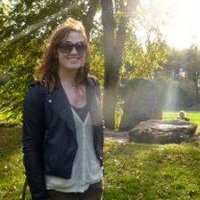- Universiteit Leiden, Archaeology, Graduate Studentadd
This is a report of our activities during the Role of Libraries in Geography and GIS Education project. A.k.a. ROLGGE (pronounced "Role G"), the project was a grant funded effort to foster the development of a community of... more
This is a report of our activities during the Role of Libraries in Geography and GIS Education project. A.k.a. ROLGGE (pronounced "Role G"), the project was a grant funded effort to foster the development of a community of libraries, data practitioners, and educators to enable effective teaching, consultation, and outreach around spatial literacy education. Funding for the project was awarded by the National Center for Research in Geography Education (NCRGE) as a Transformative Research in Geography Education grant. The funds from the project were dedicated to network building activities like in-person and virtual meetings. The project was organized by Emma Slayton and Jessica Benner who work in the Libraries at Carnegie Mellon University. Over the course of the project, we hosted 11 conversations.
It is difficult to discuss preand early post-European contact life in the Caribbean. In part, this is due to the nature of European record keeping, which often failed to fully capture Amerindian practices. Archaeologists have long... more
It is difficult to discuss preand early post-European contact life in the Caribbean. In part, this is due to the nature of European record keeping, which often failed to fully capture Amerindian practices. Archaeologists have long attempted to resolve these difficulties through the analysis of early colonial Caribbean materials and objects that reflect both Spanish and Amerindian influence. Through the use of computer modeling it is possible to approach this issue from a new perspective, that of discerning mainland–island or inter–island connections across the pre– Columbian and historic divide. Modeling hypothetical canoe routes based on the location of inhabited sites (between 1000 AD – 1550 AD) across Trinidad and the mainland coast of South America towards the Windward Islands can help to explore possible avenues of travel that were changed or interrupted during the early colonial period. This paper will approach this debate by looking for the location of early colonial Amerindi...
Research Interests:
Research Interests:
Research Interests:
Research Interests:
How does one publish something that is intended to be a completely immersive and interactive experience such as those designed for Virtual Reality (VR)? How does one convey the subjective experiences of emulated real-world environments?... more
How does one publish something that is intended to be a completely immersive and interactive experience such as those designed for Virtual Reality (VR)? How does one convey the subjective experiences of emulated real-world environments? That is the challenge of defining a publishing service model for documenting the experiences of AR and VR. In 2019 representatives from the Carnegie Mellon University digital Sciences, Humanities, Arts, Research and Publishing group (dSHARP) collaborated with faculty from CMU’s English Department to publish materials related to Shakespeare-VR, https://dh-web.hss.cmu.edu/shakespeare_vr/. The Shakespeare-VR project uses virtual reality technologies to bring students face-to-face with professional actors performing Shakespearean soliloquies in a replica of Shakespeare’s Blackfriars Playhouse. Beyond Publishing the VR experiences, dSHARP examined the complexity of publishing the accompanying OER-based pedagogical materials produced by Shakespeare-VR. As ...
Research Interests:
There is little evidence of the routes connecting Amerindian communities in the Caribbean prior to and just after 1492. Uncovering possible canoe routes between these communities can help to explain the structure, capabilities, and... more
There is little evidence of the routes connecting Amerindian communities in the Caribbean prior to and just after 1492. Uncovering possible canoe routes between these communities can help to explain the structure, capabilities, and limitations of the physical links in their social and material networks. This book evaluates how routes connecting islands indicate the structure of past inter-island networks, by using computer modeling. Computer modeling and least-cost pathway analysis is a popular approach for analyzing the physical connection between sites in archaeology. Over the past three decades researchers have explored several theories and methods to analyze least-cost pathways on landscapes. Land-based least-cost efforts have outpaced the number of works evaluating optimal travel routes across the sea’s surface. Perhaps as a result, no community standard for using computer- and GIS-based methods to model canoe or sailing routes exists. Although methods used in previous research...
